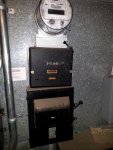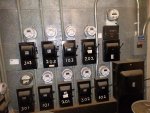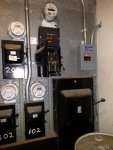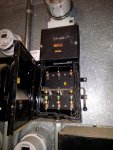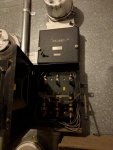A little while back I was approached by a homeowner because of a similar negative report from the "Truth-In-Sale-Of-Housing" department. These "inspectors" have a long history of creating their own code and being pushed back, largely by litigation, or the threat thereof.
A particular inspector had taken the concept of a little finger being able to touch an insulated, or bare, conductor (as applied to cracked or missing device cover plates) and had extended it to
anything that didn't have a dead front. A safety switch, fused or unfused, suddenly became a
hazard in this department's opinion. Doubly so because the fuse might have to be replaced by a non-electrician.
Bad deal for the homeowner with his 400 Amp 240/120 Volt single phase safety switch fused service disconnect. The home also had 34 additional safety switches at motors, subpanels and heating subsystems. . . it was a big place.
The area State electrical inspector said they had no comment about a maintained electrical installation and maintained equipment installed to the
Code of its original assembly. When confronted by that simple, bland statement lacking condemnation, the T.I.S.H department folded, and approved the inspection of the homeowner's safety switch "infested" house.



